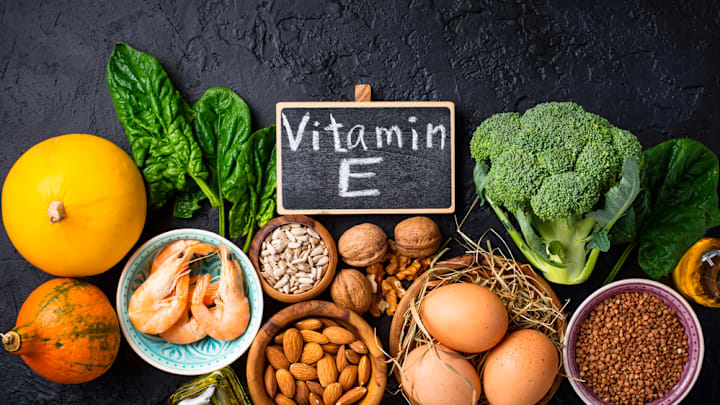How Your Diet Affects Your Skin’s Appearance

We often reach for creams, serums, and scrubs in search of clear, glowing skin. But one of the most powerful skincare tools? Your fork. While topical products play a vital role, what you eat has a profound impact on how your skin behaves—from its texture and tone to how it responds to stress, sun, and time.
Your skin is your body’s largest organ, and it’s a reflection of what’s going on internally. Inflammation, dehydration, blood sugar spikes, nutrient deficiencies—all of these can show up as dullness, breakouts, dryness, or premature aging. The good news? Small, mindful shifts in your diet can lead to noticeable improvements in your skin’s appearance and resilience.
Let’s dig into how your daily meals might be feeding (or frustrating) your skin.
Hydration: Your Skin’s Silent Hero
Before we talk about food, let’s talk about water. Dehydrated skin can look tired, flaky, and less plump. While moisturizers help externally, hydration from within is essential.
Drinking enough water helps:
- Flush toxins from the body
- Support the skin’s barrier function
- Improve elasticity and suppleness
- Reduce the appearance of fine lines
Bonus tip: foods with high water content—like cucumbers, watermelon, and leafy greens—also support hydration levels.
Blood Sugar and Breakouts
Ever notice your skin acts up after indulging in sweets or white bread? There’s a reason. High-glycemic foods (those that spike blood sugar) can increase the body’s inflammatory response, which may trigger or worsen acne.
When blood sugar spikes rapidly:
- It stimulates insulin, which can increase oil production
- It causes inflammation, which affects acne and rosacea
- It may lead to glycation, a process that damages collagen and contributes to premature aging
Better options include whole grains, legumes, and fiber-rich fruits that provide slow, steady energy—without the crash or skin backlash.
Fats: The Good, the Bad, and the Glowy
Not all fats are created equal. While trans fats and excessive saturated fats may contribute to inflammation, healthy fats are skin superstars.
Key players:
- Omega-3 fatty acids (found in salmon, flaxseeds, walnuts) help reduce inflammation, support cell membranes, and keep skin soft and supple.
- Monounsaturated fats (avocados, olive oil, almonds) help maintain skin moisture and elasticity.
Think of good fats as the skin’s natural moisturizers—from the inside out.
Antioxidants: Nature’s Defense Team
Free radicals—caused by sun exposure, pollution, and stress—damage skin cells and accelerate aging. Enter antioxidants, which neutralize these unstable molecules and help keep skin resilient and radiant.
Antioxidant-rich foods to favor:
- Vitamin C (citrus, berries, bell peppers) boosts collagen production and brightens skin.
- Vitamin E (almonds, sunflower seeds, spinach) protects against UV damage.
- Beta-carotene (carrots, sweet potatoes, kale) converts to vitamin A and helps with cell turnover.
- Polyphenols (green tea, dark chocolate, grapes) have anti-inflammatory benefits.
Colorful plates often mean your skin is getting a full spectrum of support.
Protein: The Building Block of Skin
Your skin is constantly renewing itself, and protein is crucial to this process. Collagen and elastin—proteins that keep skin firm and youthful—depend on amino acids from your diet.
Top sources:
- Lean meats, fish, eggs
- Legumes, lentils, quinoa
- Greek yogurt and cottage cheese
Pairing protein with vitamin C-rich foods (like chicken with broccoli or eggs with berries) can further support collagen synthesis.
Gut Health = Skin Health
There’s growing evidence of a gut-skin connection, meaning what’s happening in your digestive system can show up on your face.
An imbalanced gut can lead to:
- Inflammation
- Poor nutrient absorption
- Skin conditions like eczema, psoriasis, and acne
Probiotic foods like yogurt, kefir, sauerkraut, and kimchi, along with prebiotics like garlic, onions, and bananas, help maintain a healthy microbiome. When your gut is happy, your skin often follows suit.
Foods That May Sabotage Your Glow
While everyone’s skin reacts differently, some common culprits are worth keeping an eye on:
- Excess sugar: Linked to breakouts and aging via glycation
- Dairy (for some people): May aggravate acne due to hormones in milk
- Highly processed foods: Often high in salt, sugar, and additives that promote inflammation
- Alcohol: Dehydrates the skin and can exacerbate redness or puffiness
This doesn’t mean you need to cut everything out—just stay aware of how your skin responds and make adjustments accordingly.
Consistency Is Key
One green smoothie won’t erase a month of fast food, just like one breakout doesn’t mean your skin hates you. Your skin reflects your overall patterns. Think of food as part of your long game—not a quick fix.
Eating well for your skin is:
- Simple: Whole, fresh, colorful foods
- Supportive: Hydrating, nourishing, and anti-inflammatory
- Sustainable: Balanced meals that fuel you without extremes
Glow From the Inside Out
Your skincare routine matters. But glowing skin is also built in your kitchen, one bite at a time. When your body gets what it needs to function at its best, your skin becomes a mirror of that internal balance.
So go ahead—treat your skincare like self-care. Just don’t forget to extend that care to your plate. Because healthy skin isn’t just about what you apply to it.
It’s about how you feed it, support it, and honor it from the inside.